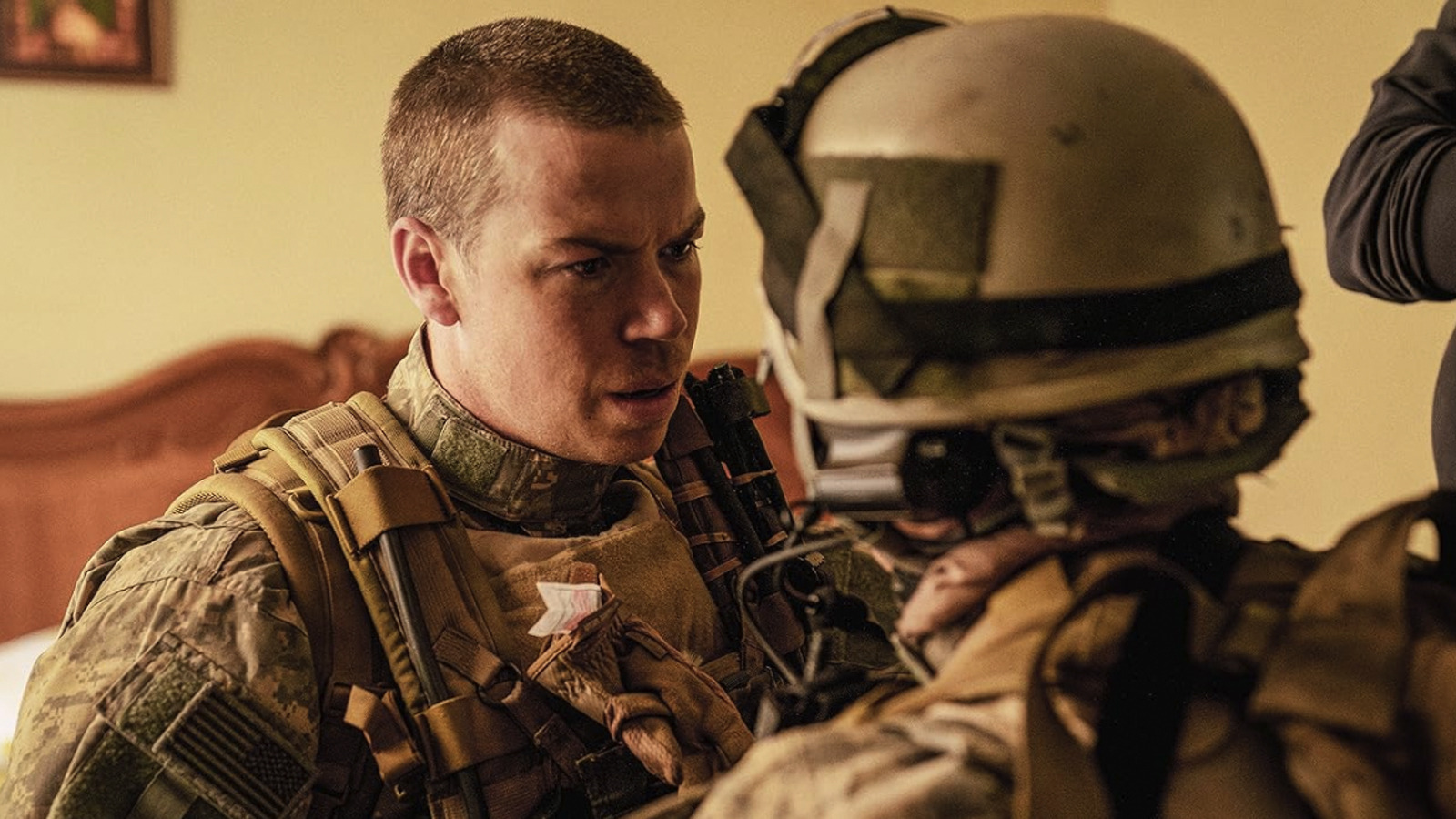
There are moments and images in this film that are so specific. A wounded soldier wakes up and sees that his leg’s on fire, or a guy looks up and sees the cables stretched across the sky. How many of those images were drawn from speaking to people who were there and realizing theyI remembered those very specific images?
Advertisement
Alex Garland: So we were interviewing Joe and he said, “I sat up and looked down and my legs were on fire.” You know the [Dogme ’95] movement?
Yes.
Alex Garland: Yeah. So this was kind of like a Dogme film in a sense, except the dogma rule was nobody is allowed to just invent something and anything that makes its way into the film has to be you can source it from a firsthand account. So that doesn’t just limit, it sort of ends my involvement in narrative, as it were. Same with the studio, same with the actors. An actor could not say, “I feel motivated to get up and walk to the window,” because if there is one of the people there saying, “You didn’t walk to the window, you sat right there,” well that’s the end of the conversation. So we did not invent.
Advertisement
Also, I don’t want to bulls*** about that. You will see things that are in a way inventions, like someone scratches the back of their head or the exact words used in a bit of dialogue in a dialogue exchange. So we know the dialogue exchange happened, but you can’t be exactly sure the words arrived in this order, if you see what I mean. But it’s not exactly invention, it’s more like as good as you can do under the circumstances of an event that took place 20 years ago and not the only, but the primary source of information being memory. There was actually some other sources, but it was mainly memory.
Was there a moment or a detail that was especially important to you? Where you said “this was one that we’re getting in here no matter what”?
Ray Mendoza: There is a lot. I mean, I try to hit it for each person. So when you talk to all the guys that were there, there’s their moment and I try to put all of those in there. For me, it was when post-IED and [Kazo is being pulled] up the driveway. There were a few takes, but Elliot was there, I was there, and there was just one take. The sound, the way [he] was struggling, the light, how much smoke there was, it was perfect — as in, too perfect. And it kind of opened up this years of compartmentalization of these emotions and feelings that I was afraid was going to happen, and it did. So that was a powerful moment for me. Therapeutic as well. I think being there with Elliot [was] maybe the only way that I could kind of deal with that because of how intense, how much that event really changed my life. Not only physically, but just emotionally.
Advertisement
The way the film uses sound to relate POVs is really interesting, because after the IED explosion, sounds are muted in the moment. But when the film cuts back to a larger scene, with the full ensemble again, we start hearing the screams. We realize the sound lets us into the heads of individual characters. How did you make this choice?
Alex Garland: One thing I would say is that when you get memories, what you’re getting is a subjective state. We are given a very clear account of the subjective state: “This is what it felt like to me.” So then the job is just how do you show that subjective state? And because you have several subjective states, then it creates a kind of patchwork within the film.
The way it would work is something like this. So Ray says, for example, he’s remembering what happened and he’s been in close proximity to an IED explosion. He’s been knocked unconscious, he’s suffering from a concussion, and one of the things that’s happening is he is kind of phasing in and out of states of awareness. So okay, one can represent that by someone glazing out and sound disappearing, but not everybody is feeling that. So how do you cross-cut, when do you cross-cut? What are the different audio spaces that correctly represents this person or correctly represents that person? Who in the aftermath of the explosion has the tinnitus type sound? Who can hear nothing?
Advertisement
Here’s the example that I thought was best and clearest, and then what the film did was just explicitly try to reproduce exactly what was said. Ray was wearing headphones. The headphones were broadcasting radio chatter the entire time. But after the explosion, Ray was not aware of the sound of that radio chatter, but he could hear someone screaming. That’s what his mind remembers in the moment. So he goes out, ultimately he finds Elliot, he pulls Elliot back. As he’s pulling Elliot back, he’s being shot at and suddenly with an awareness of the surroundings, which is to do with the awareness of being shot at, the awareness — not the sound, but the awareness of the sound – of what’s coming in over the cans suddenly comes back into his brain and is part of the memory of this moment. So that’s exactly what the film does. That’s when the sound of the radio, the sort of cacophony sound of the radio, comes back in. So we just tried to repeat what we were told, whether it was from Ray or Joe or Elliot or any of the other people involved.
![l-intro-1744148608.jpg How Warfare's Directors Made One Of The Most Intense War Films Ever [Exclusive Interview]](https://www.atlaswebrise.com/wp-content/uploads/2025/04/l-intro-1744148608-1170x658.jpg)


